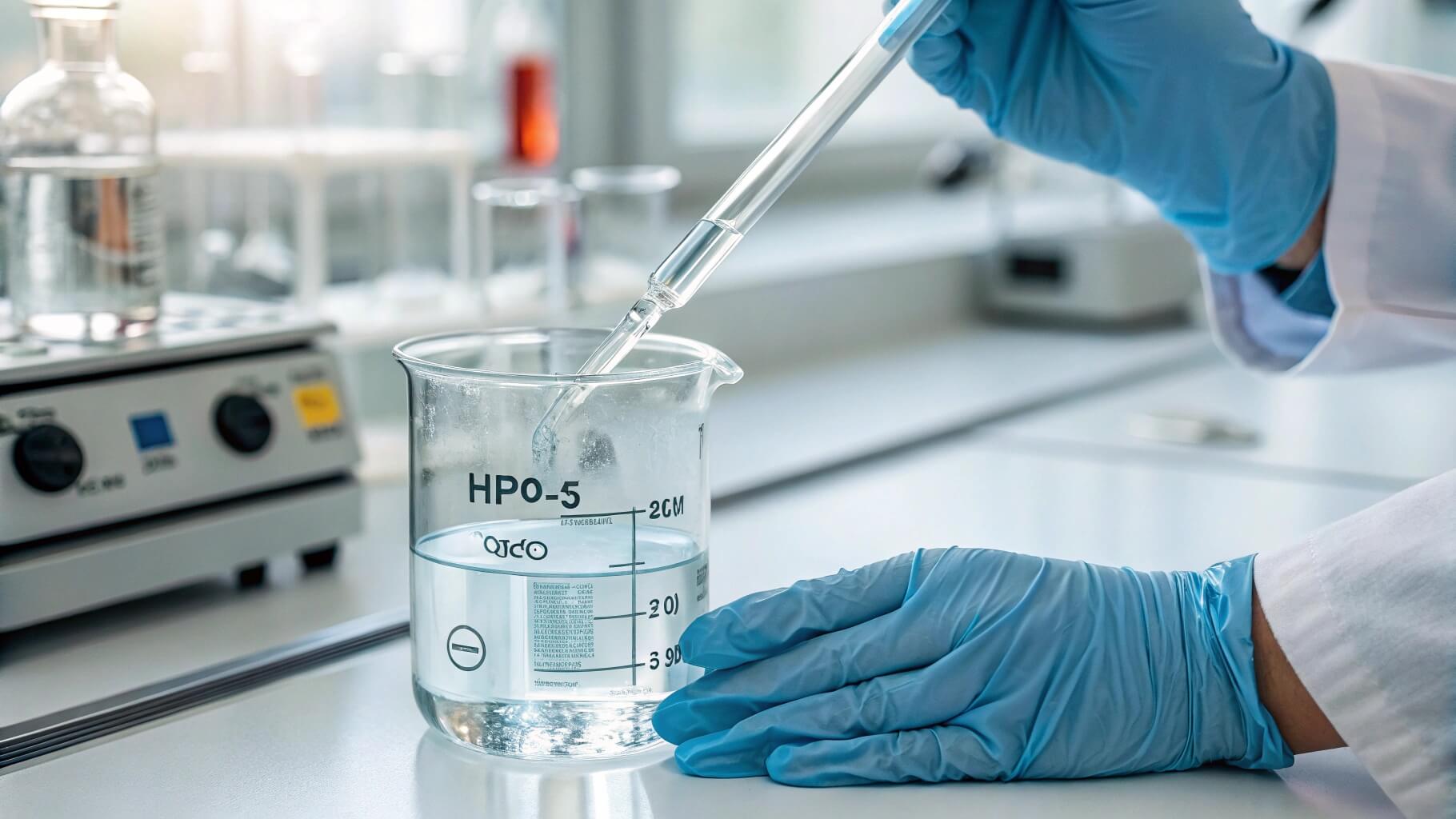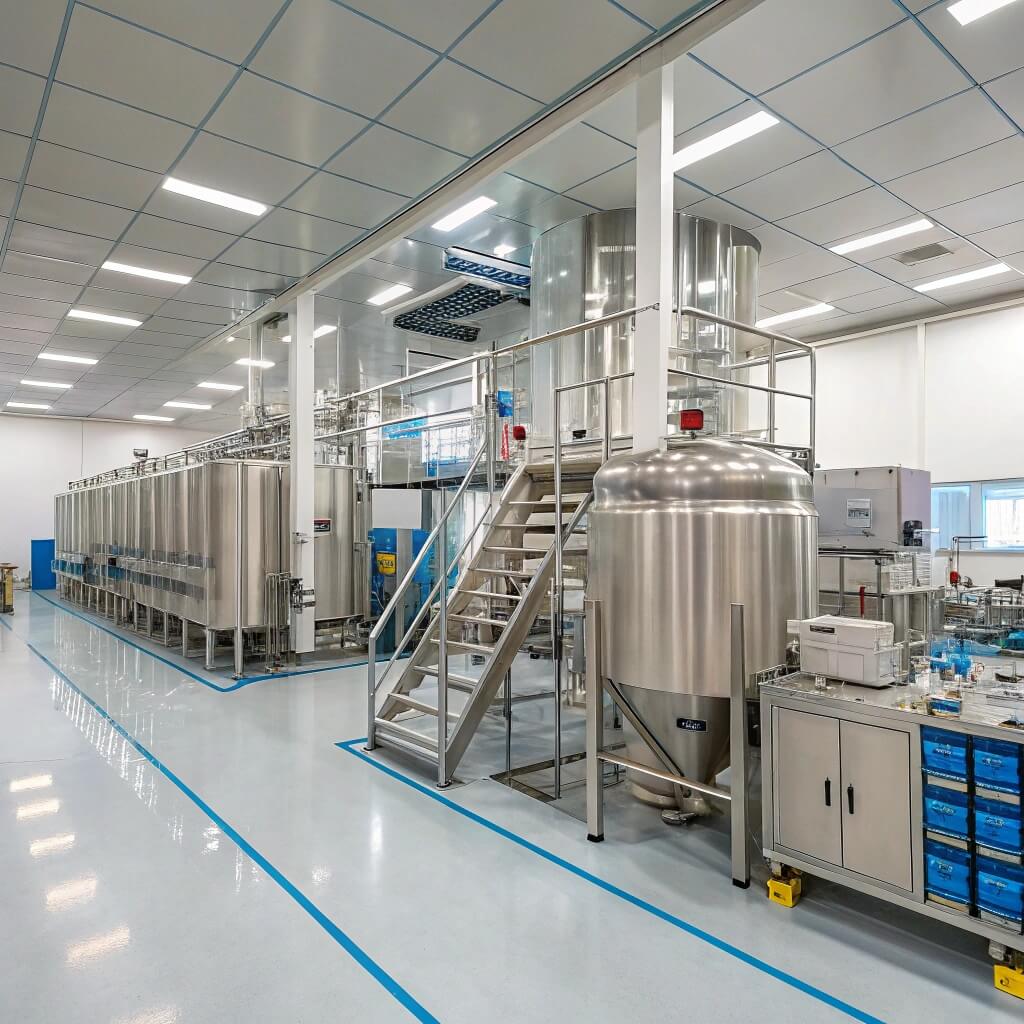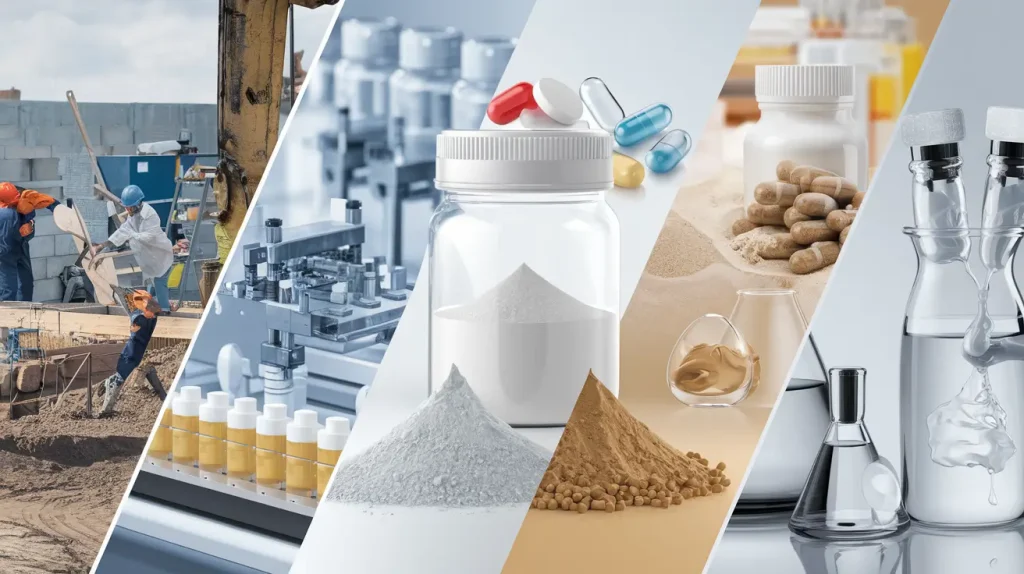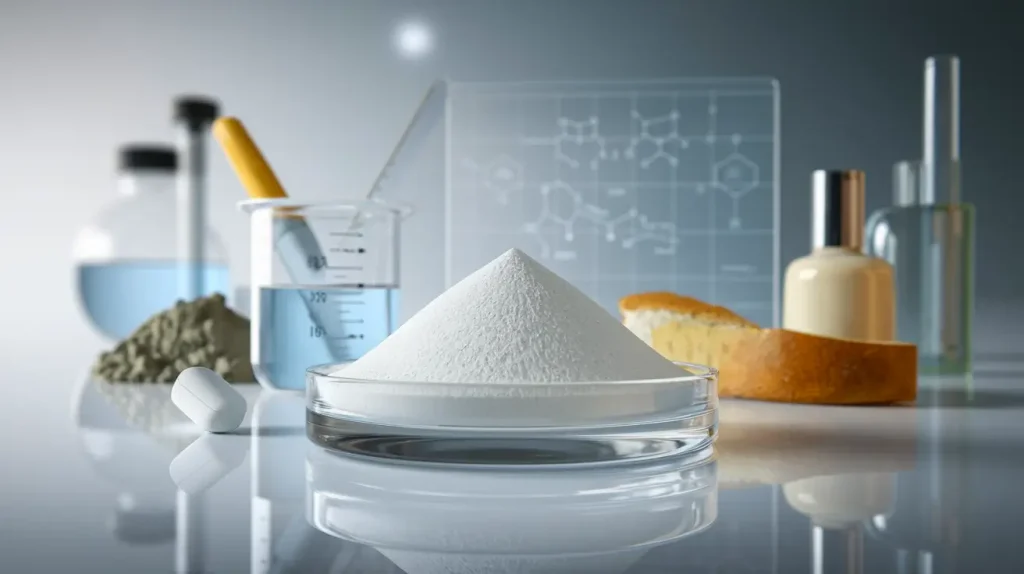HPMC E15 is widely used in pharmaceuticals, coatings, and industrial applications, but its solubility in organic solvents like ethanol remains a common question. Understanding its behavior in ethanol is crucial for ensuring formulation stability and performance.
HPMC E15 is partially soluble in ethanol but does not fully dissolve. It swells and forms a dispersion rather than a clear solution. For complete dissolution, it often requires a water-ethanol mixture or co-solvents to modify solubility properties.

A representation of how HPMC E15 interacts with ethanol, illustrating partial swelling and dispersion behavior.
To fully understand why HPMC E15 behaves differently in ethanol than in water, we first need to examine its chemical structure and the principles of its solubility.
What is HPMC E15 and How Does Its Solubility Work?
HPMC E15 is a water-soluble polymer widely used in pharmaceutical, industrial, and construction formulations. But how does its solubility work? The way HPMC E15 dissolves depends on its chemical structure, temperature, and the solvent used, making it crucial to understand its behavior in different environments.
HPMC E15 is a cellulose ether modified with hydroxypropyl and methyl groups, allowing it to dissolve in water while exhibiting limited solubility in organic solvents like ethanol. This unique solubility profile makes it valuable for controlled-release drugs, coatings, and adhesive applications.
Chemical Structure and Its Impact on Solubility
| Component | Function |
|---|---|
| Cellulose Backbone | Provides structural integrity but is naturally water-insoluble. |
| Hydroxypropyl Groups | Increases water solubility and gelation resistance. |
| Methyl Substitution | Enhances film-forming properties and viscosity control. |
The degree of substitution (DS) and molecular weight impact solubility, gelation, and viscosity. Higher hydroxypropyl content improves hydration and solubility, while higher molecular weight leads to increased viscosity and slower dissolution.
Why Solubility Matters in Pharmaceutical and Industrial Applications
- Pharmaceuticals – Used for tablet coatings, controlled drug release, and gel formation. Poor solubility can affect dosage uniformity and bioavailability.
- Industrial Applications – Acts as a binder, film-former, and stabilizer in coatings and adhesives. Solubility affects workability and adhesion properties.
- Personal Care & Food – Functions as a thickener and emulsifier in lotions and edible coatings. Consistent solubility ensures texture stability.
Since HPMC E15 behaves differently in ethanol and water, understanding how it interacts with organic solvents is crucial. Next, we’ll explore whether HPMC E15 truly dissolves in ethanol and what research says about its solubility behavior.
Does HPMC E15 Dissolve in Ethanol?
HPMC E15 is well known for its water solubility, but its behavior in organic solvents like ethanol is different. Many formulators assume it dissolves in ethanol due to its hydroxypropyl modification, but in reality, it behaves differently in alcohol-based solutions.
HPMC E15 does not fully dissolve in ethanol but rather swells and forms a dispersion. While it absorbs some ethanol, it does not achieve a clear or homogenous solution like it does in water.
Solubility of HPMC E15 in Organic Solvents vs. Water
| Solvent | Solubility Behavior |
|---|---|
| Water | Fully soluble, forming a clear or slightly turbid solution. |
| Ethanol (100%) | Swells but does not dissolve, forming a dispersion. |
| Ethanol-Water Mix (50:50) | Partial solubility; requires careful formulation. |
| Acetone, Chloroform | Insoluble; forms a precipitate. |
HPMC E15 Solubility Testing in Ethanol: What the Research Says
Studies show that HPMC E15 does not dissolve in absolute ethanol but can be dispersed in hydroalcoholic systems (water-ethanol blends). Research suggests:
- In 100% ethanol, HPMC E15 swells but does not dissolve, forming a non-uniform dispersion.
- In ethanol-water mixtures (50:50), solubility improves, but higher ethanol content still reduces dissolution.
- In pharmaceutical coatings, co-solvents like isopropanol or methanol are often used to modify solubility.
Key Factors Influencing HPMC Dissolution in Alcohol-Based Solutions
- Ethanol Concentration – Higher ethanol content reduces solubility, requiring a co-solvent or water to aid dispersion.
- Temperature – Heating does not improve solubility in ethanol but may affect viscosity.
- Polymer Molecular Weight – Higher viscosity grades of HPMC (e.g., E50) swell more in ethanol than lower viscosity grades like E5.
- Presence of Surfactants – Surfactants or emulsifiers can enhance dispersion in ethanol-rich systems.
Since HPMC E15 behaves differently in alcohol-based solutions, understanding which formulation techniques work best is essential. Next, we’ll explore the key factors that affect its solubility in ethanol and how to optimize its use in formulations.
What Affects the Solubility of HPMC E15 in Ethanol?
HPMC E15 is partially soluble in ethanol, but several key factors influence its dissolution behavior in alcohol-based systems. Understanding these variables helps optimize its performance in coatings, controlled-release drugs, and industrial formulations.
Role of Hydroxypropyl Substitution and Polymer Molecular Weight
- Hydroxypropyl groups increase water affinity, making HPMC E15 more hydrophilic and less soluble in non-polar solvents like ethanol.
- Higher molecular weight polymers (higher viscosity grades) tend to swell more in ethanol but do not dissolve completely.
- Lower viscosity grades (e.g., HPMC E5) disperse better in ethanol-water mixtures than higher viscosity versions.
Effect of Temperature on HPMC Solubility in Ethanol
- Unlike water, increasing temperature does not improve solubility in ethanol.
- Heating ethanol above 40°C can cause increased polymer aggregation, making dispersion more difficult.
- Cold ethanol slows swelling, but does not significantly alter solubility.
Influence of Ionic Strength and Solvent Polarity on Dissolution
- Ethanol has lower polarity than water, reducing HPMC E15’s ability to form hydrogen bonds for dissolution.
- Adding electrolytes or salts may further limit solubility due to polymer charge shielding effects.
- Solvent polarity plays a major role—HPMC E15 is soluble in polar protic solvents (like water) but swells in less polar organic solvents.
Interaction of HPMC with Surfactants and Excipients in Ethanol Solutions
- Surfactants improve HPMC E15 dispersion by reducing interfacial tension between polymer particles and ethanol.
- Co-solvents like glycerin or PEG help modify viscosity and improve dispersibility in hydroalcoholic systems.
- Excipients like PVP and PEG can enhance compatibility, preventing polymer precipitation.
By optimizing these factors, formulators can improve HPMC E15’s stability in ethanol-based systems, allowing for better dispersion and controlled functionality. Next, we’ll explore how HPMC E15 behaves in different solvent systems and whether co-solvents can improve its performance.
How Does HPMC E15 Behave in Different Solvent Systems?
HPMC E15 exhibits different solubility characteristics depending on the solvent used. While it dissolves readily in water, its behavior in ethanol and other organic solvents varies due to differences in polarity, hydrogen bonding, and polymer interaction. Understanding these differences is key for optimizing formulations in coatings, pharmaceuticals, and industrial applications.
HPMC E15 Solubility in Water vs. Ethanol: A Direct Comparison
| Solvent | Solubility Behavior |
|---|---|
| Water | Fully soluble, forming a clear or slightly turbid solution. |
| Ethanol (100%) | Swells but does not dissolve, forming a dispersion. |
| Water-Ethanol Mix (50:50) | Partial solubility; requires controlled formulation techniques. |
| Acetone | Insoluble; polymer precipitates out. |
| Isopropanol | Limited swelling, but no full dissolution. |
Partial Swelling and Precipitation in Ethanol-Based Formulations
- In pure ethanol, HPMC E15 absorbs some solvent but does not dissolve fully, leading to a non-uniform gel-like dispersion.
- In hydroalcoholic systems (water-ethanol blends), solubility improves but remains incomplete if ethanol concentration is too high.
- In high-ethanol-content coatings, HPMC may precipitate out, requiring co-solvents or surfactants to improve stability.
Compatibility with Co-Solvents: Isopropanol, Methanol, and Acetone
- Isopropanol (IPA) – Similar behavior to ethanol, with limited solubility and swelling.
- Methanol – Improves HPMC E15 dispersion but does not fully dissolve high-viscosity grades.
- Acetone – HPMC E15 is completely insoluble, leading to rapid precipitation.
Techniques to Improve Dispersibility and Dissolution in Organic Solvents
- Use Water-Ethanol Blends – Keeping ethanol below 50% helps prevent polymer precipitation.
- Incorporate Co-Solvents (PEG, Glycerin) – Helps modify solubility and viscosity.
- Use Surfactants (Tween, Polysorbates) – Improves polymer dispersion in ethanol-rich systems.
- Optimize Mixing Conditions – Moderate stirring speeds prevent clumping and uneven swelling.
By selecting the right solvent system and dispersing techniques, formulators can enhance HPMC E15 performance in ethanol-based applications, ensuring better stability, film formation, and controlled-release functionality. Next, we’ll explore how to accurately test and measure HPMC E15 solubility in different solvent environments.
What Are the Best Methods for Testing HPMC E15 Solubility?
Ensuring HPMC E15 dissolves effectively in various solvents is essential for pharmaceutical, industrial, and coating applications. Proper solubility testing[^1] allows formulators to predict performance, optimize formulations, and avoid processing issues like precipitation or incomplete dissolution.
[^1]: Learn about effective solubility testing methods to enhance formulation performance and avoid issues. This resource can provide valuable techniques.
Laboratory Methods for Evaluating Polymer Solubility
To determine HPMC E15 solubility, the following laboratory techniques are commonly used:
| Method | Purpose |
|---|---|
| Visual Inspection | Determines clarity, uniformity, and precipitation behavior. |
| Gravimetric Analysis | Measures undissolved residue after filtration. |
| Turbidity Measurement | Assesses dispersion stability in hydroalcoholic solutions. |
| Viscosity Testing (Brookfield Viscometer) | Evaluates hydration efficiency and solubility kinetics. |
| Differential Scanning Calorimetry (DSC) | Identifies polymer-solvent interactions and phase transitions. |
Techniques for Measuring HPMC Precipitation and Swelling
- Microscopic Analysis – Detects swollen polymer particles in ethanol solutions.
- Light Scattering (DLS) – Measures particle size distribution in suspensions.
- Centrifugation & Filtration – Quantifies precipitated polymer content in solvent systems.
Practical Dissolution Strategies for Controlled-Release Formulations
- For Hydroalcoholic Systems – Use water-ethanol blends (≤50% ethanol) to maintain solubility.
- For High-Viscosity Formulations – Add co-solvents like PEG or glycerin to improve hydration.
- For pH-Sensitive Applications – Adjust solvent pH to maintain polymer stability.
How to Optimize Solvent Selection for Pharmaceutical and Industrial Use
- Identify Required Solubility Behavior – Film-forming, thickening, or controlled release.
- Choose the Right Solvent Mix – Water-based for full dissolution, hydroalcoholic for dispersion.
- Evaluate Excipient Compatibility – Co-solvents, surfactants, and pH modifiers.
- Test for Long-Term Stability – Ensure no precipitation or phase separation over time.
By applying precise solubility testing methods, formulators can optimize HPMC E15 for ethanol-based applications, ensuring consistent performance and stability. Next, we’ll summarize the key takeaways and best practices for working with HPMC E15 in organic solvent formulations.
Conclusion
HPMC E15 is widely used in pharmaceuticals, coatings, and industrial applications, but its solubility in ethanol and other organic solvents differs significantly from its behavior in water. Understanding these differences is crucial for optimizing formulations and ensuring stability in ethanol-based systems.
Key Takeaways About HPMC E15 Solubility in Ethanol
- HPMC E15 does not fully dissolve in ethanol but swells and forms a dispersion.
- Ethanol concentration affects solubility—higher ethanol content increases precipitation risk.
- Hydroalcoholic systems (water-ethanol blends) improve solubility, especially with co-solvents.
- Temperature does not enhance ethanol solubility but may impact viscosity and dispersion stability.
Best Practices for Working with HPMC in Organic Solvent-Based Formulations
- Use ethanol-water blends (≤50% ethanol) to improve dispersibility.
- Pre-wet with glycerin or PEG to enhance hydration and reduce clumping.
- Incorporate surfactants (e.g., Tween, Polysorbates) to improve uniform dispersion.
- Perform solubility testing (viscosity, precipitation, turbidity) before large-scale application.
Final Recommendations for Improving Dissolution and Stability
By carefully selecting solvent systems, mixing conditions, and co-solvents, formulators can optimize HPMC E15 solubility for pharmaceutical, industrial, and cosmetic applications. Testing different formulation strategies ensures stability and effectiveness, reducing processing issues in alcohol-based systems.
FAQ
Does HPMC dissolve in ethanol?
No, HPMC does not fully dissolve in ethanol. Instead, it swells and forms a dispersion rather than a clear solution. It requires water or a co-solvent to dissolve effectively. In pure ethanol (100%), HPMC E15 remains partially swollen or suspended, making it unsuitable for formulations requiring complete solubility.
What is the solubility of HPMC E15?
HPMC E15 is highly soluble in water but only partially dispersible in ethanol. It dissolves readily in cold water (10-25°C) and fully hydrates when gradually heated to 40-60°C. In hydroalcoholic systems (water-ethanol mixtures), solubility improves when ethanol content is below 50%. In pure ethanol, it does not dissolve completely and may precipitate.
How to dissolve HPMC?
To dissolve HPMC efficiently:
- Cold Water Dispersion (10-25°C) – Sprinkle HPMC slowly into cold water while stirring.
- Hydration Phase (15-60 min) – Allow time for the polymer to absorb water and swell.
- Gradual Heating (40-60°C) – Accelerates complete dissolution.
- For Hydroalcoholic Systems – Use a water-ethanol mixture (≤50% ethanol) and add co-solvents like PEG or glycerin to improve dispersion.
Is hydroxypropyl cellulose soluble in ethanol?
Unlike HPMC, hydroxypropyl cellulose (HPC) is more soluble in ethanol and other organic solvents. HPC can dissolve in ethanol, isopropanol, and acetone, making it a better option for formulations requiring polymer solubility in non-aqueous systems. However, solubility depends on polymer grade and molecular weight.




